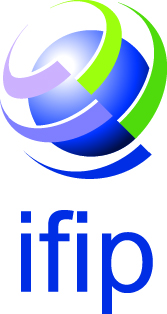Abstract
The purpose of this paper is to establish the mechanism of mutual transformation between programming language and natural language through the cognitive features of programming language and natural language which enables computers to read natural language and furthermore, to think like a human brain to achieve the purpose of human-computer interaction. The method is: First, establish a data dictionary, a vocabulary table, a sentence table and a bilingual table so that natural language and programming language can establish a one-to-one, one-to-many conversion relationship. Second, according to the data dictionary and bilingual table, establish the thinking tree model, and implement the traversal of natural language (a particular mathematical problem) through programming language. Third, establish a selection mechanism so that, through programming language, the computer knows how to make different choices and responses corresponding to different natural languages. The result is: Through the exploration of the cognitive features of programming language and natural language, establish the mechanism of the mutual transformation between programming language and natural language. The significance is: through the use of two different languages, it can establish the mechanism of human-computer interaction. For the one-to-one situations, it can be automatically converted based on rules. On the other hand, for the one-to-many situation, it can realize machine learning, moreover, deep learning based on statistics. Thus, it lays the foundation for the application of artificial intelligence in the field of education.
Access this chapter
Tax calculation will be finalised at checkout
Purchases are for personal use only
Similar content being viewed by others
References
Zhong, Y.: Comprehensive information based methodology for natural language understanding. J. Beijing Univ. Posts Telecommun. 27(4), 1–12 (2004)
Jurafsky, D., Martin, J.H.: Speech and Language Processing. Publishing House of Electronics Industry, Beijing (2005)
Tucker, A.B., Noonan, R.E.: Programming Languages Principles and Paradigms, 2nd edn. Tsinghua University Press, Beijing (2009)
Xu, F., Xu, W.: Transparent Geometry - New Practice of Internet + Planar Geometry. Shanghai Education Publishing House, Shanghai (2017)
Author information
Authors and Affiliations
Corresponding author
Editor information
Editors and Affiliations
Rights and permissions
Copyright information
© 2018 IFIP International Federation for Information Processing
About this paper
Cite this paper
Xu, W., Xu, F., Zou, X., Xu, Z. (2018). The Cognitive Features of Programming Language and Natural Language. In: Shi, Z., Pennartz, C., Huang, T. (eds) Intelligence Science II. ICIS 2018. IFIP Advances in Information and Communication Technology, vol 539. Springer, Cham. https://doi.org/10.1007/978-3-030-01313-4_19
Download citation
DOI: https://doi.org/10.1007/978-3-030-01313-4_19
Published:
Publisher Name: Springer, Cham
Print ISBN: 978-3-030-01312-7
Online ISBN: 978-3-030-01313-4
eBook Packages: Computer ScienceComputer Science (R0)





